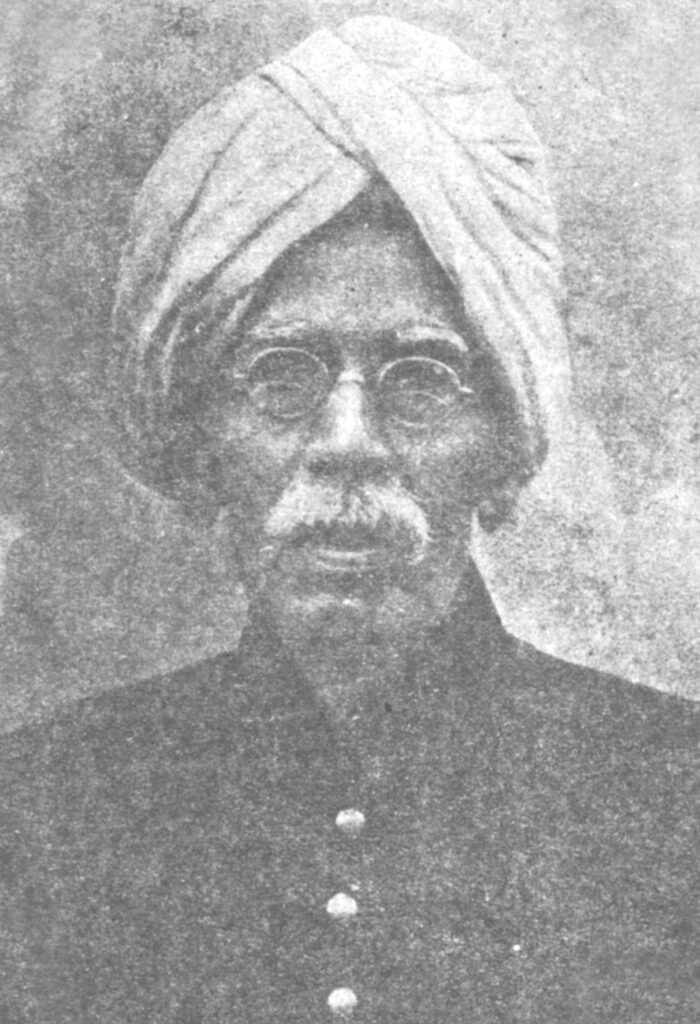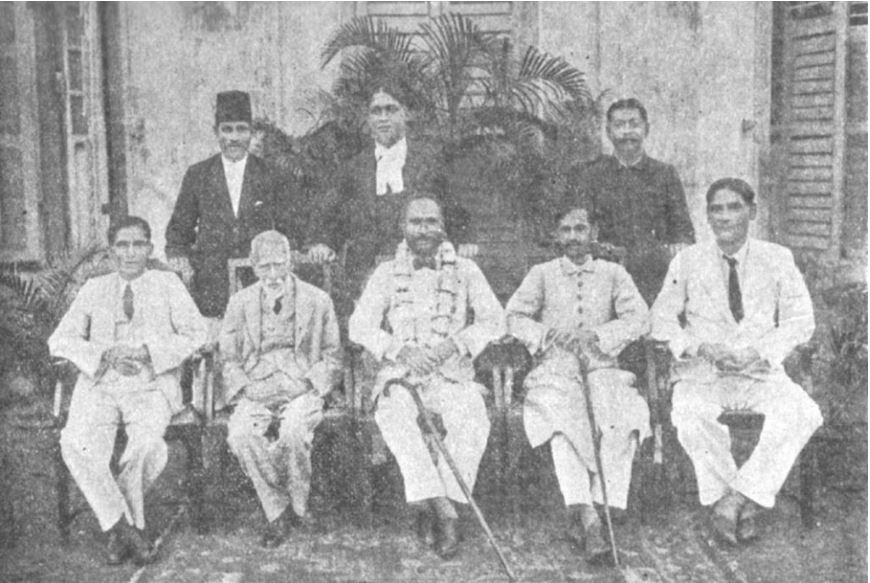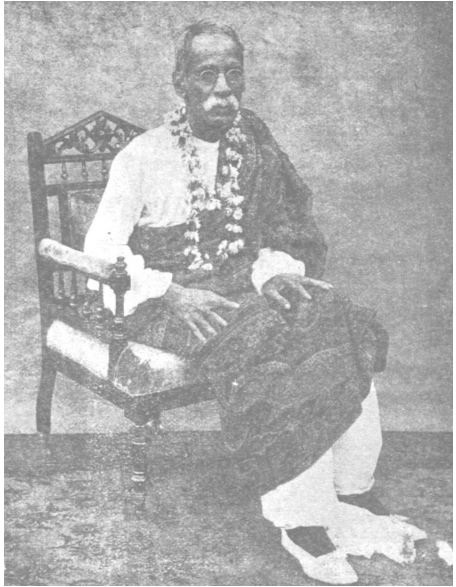Kailash Chandra Dash

Madhusudan Das, the beacon of Odia Identity
The last phase of the 19th century and the first phase of the 20th century witnessed a great awakening in Odisha. It was the phase of New Odisha- in-making. The Odias during this phase got a sense of identity. This identity needed to be asserted. Many persons and institutions were responsible for this resurgent trend in Odisha. One of the most significant among them was Madhusudan Das.
His career in Odisha at least from the 1880s till his death was entirely dedicated to the making of modern Odisha. He took a very prominent role in the amalgamation of different Odia speaking tracts lying scattered in different neighbouring provinces into a great political entity. At the same time, he attempted socio-economic and cultural progress of the Odias which would stabilise his political Odisha. He articulated manifold problems of Odisha and asserted the identity of the Odias in that crucial phase.
In order to establish the identity of the Odias he closely connected himself with many elites and associations which demanded the reconstruction of Odisha. The activities of Madhusudan were found to be expressed through the powerful national bodies like Utkal Sabha and Utkala Sammilani. In many respects he was a prophet of Odia nationalism. Hence in this article I present Madhusudan’s connection with the formation of Odia national identity drawing information from some contemporary documents.
Madhusudan Das while a student in Calcutta took a very prominent role in educating many Odia labourers there in the 1870s which was his primary attempt to establish the Odias in Calcutta. In Calcutta his intense love for Odia language was intact as it is evident from his demand to write the answers of Sanskrit questions in Odia (his mother language) to the authorities of Calcutta University in 1869-70.
In Calcutta Madhusudan was converted into a Christian. But it did not deter his plan for the re-invention of Odisha in the 1880s after his return from Calcutta to Cuttack and his practice as a lawyer. The Puri Jagannath temple affairs of this phase provided him an opportunity to enter into the movement for a regenerated Odisha.
In 1878 Raja Divyasimha Deb was convicted of murder and was sentenced to transportation for life. The British Government found an opportunity to intervene in the temple management. But the dowager mother of Divyasimha Deb immediately called in the Royal Court and priests of the temple and announced the ascent to the throne of her five-year-old grand-son Jagannath Jenamani and proclaimed him as Raja Mukunda Deb of Puri.
The queen began to manage the affairs of the temple on behalf of the minor Raja. The management was naturally not to the liking of the Government. It was decided that the control and the endowments of the temple were to be vested in a committee of management. Accordingly, the Puri temple Act of 1880 was announced. The legislation was objected by the priests of the temple and the queen submitted her petition to the Government. Her representation went unheeded.
On the contrary, the local Government instituted a suit in the Court seeking authority to appoint a Receiver for the temple. The Court decided in favour of the Government and the queen was denied the management of the temple. The announcement of the Court’s decision was looked upon as a humiliation to the age-old Odisha tradition. The queen wanted to appeal to the Calcutta High Court, but she lacked resources. She made a personal request to Madhusudan Das to fight her case. Madhusudan accepted the responsibility though everybody thought it was a lost case.
As a lawyer he would have been very happy to find better cases; but he concentrated his attention on this issue because he accepted Jagannath as a marker of the Odia identity. He considered the decision as an attempt to disrupt Odia national sentiment and he therefore directed his attention to it. He went through the royal records and prepared the case meticulously. He tried to focus attention through articles in the press against the unjust interference of the Government in the matter. He published two interesting letters in the name of Lunatic in Utkala Dipika critically presenting his arguments against the suit for the management of the Jagannath temple.

(Utkala Dipika, March 26 and April 9 of 1887, Dash 1978:367-368) After prolonged deliberations at Calcutta High Court the lower court’s order to appoint a Government Receiver was set aside. Raja Mukunda Deb was reinstated to his authority. This was a victory of Madhusudan Das. Utkal Dipika in an interesting article had thanked Madhusudan for this noble contribution. He had by this great national activity justified the adage Bipatte Madhusudana (Lord Madhusudan helps in the time of distress). His perseverance and skilful handling of the case promoted him to be the greatest Odia nationalist. (Ibid; April 30,1887)
By preserving the prestige of Thakur Raja of Puri Madhusudan earned the enormous confidence of the people. Madhusudan accepted Jagannath as the central part of Odia culture. In order to make this conviction firm in the minds of the Odias he recited a poem in the public meeting in the Town Hall of Cuttack in 1928.
A part of the poem runs like this –
“Kotie Odia gotie kanthare daka trahi Jagannatha
Andhara ghunchiba nischaya dekhibe Jatira unnati patha
Sudarsana Chakra garaji uthiba Baliara bahutale
Matanka Srianga purbabata heba satru palaibe dare”.
“Save us O Lord Jagannath” when millions of Odia will sing in one voice
The path of Progress will surely come to sight dispelling the darkness;
Under the Lord`s mighty arm
The Wheel of Sudarshana will rumble and rotate,
Frightened the foe will retreat and the glory of our motherland will return to its former state.
(Utkala Dipika, November 17, 1928; translation by Dr Sneh Prabha Das, an eminent translator)
Madhusudan Das started to articulate his feelings of Odia identity in the great Odia nationalist forums- Utkala Sabha and Utkala Sammilani. These two were the most significant forums to present diverse problems of the Odias from the last phase of the 19th century to the first four decades of the 20th century A.D. He was an important part of the Utkala Sabha in the 1880s and 1890s. His voice was very powerful in the Utkala Sabha in the first decade of the 20th century.
As a member and president of the Association Madhusudan took interest on the pressing problems of the union of the different Odia-speaking tracts under the Bengal Government and in this connection his discussion with the missionary Howell was very remarkable. In the letter of 26th/28th January 1904 to Howell Madhusudan as a member of the Association demanded the unification of Odia-speaking tracts under Bengal and not with the Central Provinces or Bihar.
Gokulananda Choudhury, an ardent Odia nationalist, had then developed an opinion to the effect that it was to the advantage of Odisha to be under Central Province administration. He was also supported by some Odias but they changed their views and accepted the stand of Madhusudan. Madhusudan’s potent arguments on behalf of the Orissa Association reflected the intense activities of it to highlight Odia problems. He had his own opinion about the people of Odisha.
By people of Odisha he did not mean a few pleaders or a few aspirants for titles and honours or a few candidates for employment in the higher grades of Government service. He meant it as Odia nation which included all who were permanent residents of Odisha, whatever their race, nationality or religion. This indicates the nature of Odia identity he was articulating then.

Throughout the movement for the reservation of Odia language in Sambalpur during the phase of Utkala Sabha ascendancy Madhusudan was the moving spirit. His efforts were crowned with success when the Government of the Central provinces restored Odia as the Court language of Sambalpur with effect from 1 January 1902.
Utkala Sabha was a very limited body. It had no wider link. Madhusudan must have felt that a wider body representing many sections-rural and urban-in Odisha would help in the proper solution of the Odia problems. This led to the birth of Utkala Sammilani (Utkala Union Conference).




























